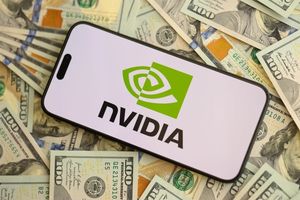
As of November 2025, the Canadian financial landscape is a crucible of innovation and caution, particularly within the realm of TSX penny stocks. The burgeoning influence of Artificial Intelligence (AI) has cast a long shadow, simultaneously igniting speculative fervor and raising significant concerns over potentially inflated valuations. This dynamic is further complicated by profound, AI-driven shifts in the Canadian employment market, creating a complex environment of both unprecedented opportunity and considerable risk for investors and the workforce alike.
The interplay between these factors defines a crucial moment for Canadian investors eyeing the high-risk, high-reward world of penny stocks. While the promise of AI's transformative power continues to attract capital, the market is grappling with the disconnect between speculative enthusiasm and tangible, sustainable profitability. This scenario necessitates a nuanced understanding of market trends, company fundamentals, and the evolving nature of work in an an AI-powered economy.
The AI Juggernaut: Valuation Fears and Employment Restructuring
The financial markets are currently experiencing a palpable tension, with escalating concerns about an "AI bubble" drawing comparisons to historical speculative periods like the dot-com era. Early November 2025 saw global stock markets, including the tech-heavy Nasdaq and S&P 500, undergo sharp declines as these valuation fears intensified. Despite these downturns, a resilient pattern of "dip buying" around November 10, 2025, led to a recovery in some prominent AI stocks, highlighting the persistent belief in AI's long-term potential even amidst short-term volatility.
Key indicators point to potentially unsustainable valuations within the AI sector. Companies like Palantir (NYSE: PLTR), a data analytics firm with significant AI applications, have reportedly traded at astronomical price-to-earnings (P/E) ratios, in some cases as high as 700 times earnings. Nvidia (NASDAQ: NVDA), a semiconductor giant crucial to the AI revolution, achieved a historic $5 trillion valuation in November 2025, further fueling discussions about overvaluation. Adding to the unease, an August 2025 report by the Massachusetts Institute of Technology indicated that 95% of organizations are seeing no return on their substantial enterprise investments in Generative AI. Concerns about "circular financing" practices among leading AI tech firms have also emerged, with critics arguing these practices artificially inflate valuations. Prominent financial figures, including Jamie Dimon of JP Morgan (NYSE: JPM), acknowledge AI's transformative power but caution that a significant portion of current investments might be wasted, with a higher chance of a meaningful stock market drop. Veteran investor Mark Mobius has even predicted a potential 40% crash in AI stocks. Despite these red flags, a robust underlying demand for AI persists, with large cloud providers reporting rapidly increasing earnings from AI services, often funding their investments through free cash flow. For AI startups, valuations in 2025 are still seeing high multiples (e.g., 25-30x EV/Revenue) in fundraising rounds, with investors increasingly prioritizing proprietary technology, data quality, and defensibility over pure speculative hype.
Simultaneously, Artificial Intelligence is profoundly reshaping Canada's job market, leading to a "splitting in two" effect. Roles characterized by repetitive or administrative tasks are highly exposed to automation and have seen underperformance since 2022. Clerical work and data-processing tasks are identified as having the highest automation risk. Conversely, sectors that both face automation and effectively leverage AI, such as software development and data analysis, have outperformed the broader labor market. Approximately 56% of Canadian workers are in occupations with high AI exposure, roughly evenly divided between jobs where AI complements human tasks (e.g., engineering, healthcare) and those more susceptible to automation. Evidence suggests an early impact on hiring practices, with job postings for highly automatable positions declining since 2022. Experts predict that AI will more often transform specific job activities rather than completely eliminate entire occupations. There has been a 37% increase in demand for core AI skills (e.g., machine learning, deep learning, AI ethics) from 2018 to 2023, while demand for peripheral AI skills (e.g., general software development, cloud computing) dropped by 46.4%, indicating that automation tools are augmenting these functions. While overall demand for AI professionals experienced a slowdown between late 2021 and 2023 due to economic uncertainties and a shift towards retraining existing employees, long-term growth in AI-related employment is still anticipated. Key industries actively seeking AI talent in Canada include professional, scientific, and technical services, financial services, manufacturing, and publishing.
Winners and Losers in the AI-Driven Market
The current climate presents a dichotomy for companies, particularly those trading as penny stocks on the TSX and TSX Venture Exchange (TSXV). Those that can genuinely integrate AI into their core operations, develop essential AI-enabling technologies, or provide critical raw materials for the AI infrastructure stand to benefit significantly. Conversely, companies with outdated business models, those in highly automatable sectors without a clear AI strategy, or those built purely on speculative hype face substantial risks.
Potential Winners:
- AI-Focused Penny Stocks with Differentiated Technology: Smaller Canadian companies like Xtract One Technologies (TSX: XTRA), which focuses on AI-powered threat detection, Scope AI (TSXV: SCPE), OneSoft Solutions (TSXV: OSS), Pivotree (TSXV: PVT), and Diagnos (TSXV: ADIS), a healthcare AI company, could see growth if they can demonstrate proprietary technology, clear value propositions, and a path to profitability. Their success hinges on moving beyond speculative interest to deliver tangible results in high-demand AI applications.
- Critical Mineral Companies: Firms involved in extracting critical minerals such as lithium, copper, and gold, essential for clean energy, electric vehicles, and AI infrastructure (e.g., semiconductors), are positioned to benefit from the foundational demand driven by AI. Examples include BCM Resources (TSXV: BCM), Golconda Gold (TSXV: GGX), GoldMining Inc. (TSX: GOLD), and Majestic Gold (TSXV: MJS). While speculative, these companies are crucial enablers of the broader tech boom.
- Larger Canadian AI Players: More established Canadian AI companies like Open Text Corp (TSX: OTEX), CGI Group (TSX: GIB.A), and Kinaxis (TSX: KXS) are better positioned to weather market volatility due to their scale, diversified offerings, and existing customer bases. Their continued innovation and strategic acquisitions in the AI space will be key to sustained growth.
- Companies Offering AI-Complementary Solutions: Penny stocks that develop software or services designed to enhance human productivity in an AI-augmented workplace, or those providing AI training and upskilling solutions, could find a niche. As the Canadian workforce adapts, demand for such tools will likely rise.
Potential Losers:
- Companies in Highly Automatable Sectors: Penny stocks operating in industries heavily reliant on repetitive administrative tasks or data processing, without a clear strategy for AI adoption or transformation, face significant headwinds. Their operational costs may become uncompetitive, and their workforce could be disproportionately affected by automation.
- Purely Speculative AI Ventures: Companies whose valuations are primarily driven by "AI buzz" rather than solid fundamentals, proprietary technology, or a viable business model, are highly vulnerable to market corrections. The "AI bubble" concerns mean that such firms could experience rapid and severe devaluations if investor sentiment shifts.
- Companies Unable to Attract AI Talent: As demand for core AI skills surges, penny stocks that cannot compete for or retain specialized AI professionals may struggle to innovate and remain relevant. This challenge is particularly acute for smaller firms with limited resources compared to larger tech giants.
- Traditional Retailers and Service Providers Without Digital Transformation: While not directly AI companies, some penny stocks in traditional sectors like Roots Corporation (TSX: ROOT) will need to strategically integrate AI into their operations (e.g., supply chain optimization, personalized marketing, customer service automation) to remain competitive against larger, more technologically advanced rivals. Failure to adapt could lead to declining market share and profitability.
Broader Significance and Historical Parallels
The current AI-driven market dynamics represent a significant inflection point, fitting into broader industry trends of technological disruption and economic restructuring. The "AI bubble" narrative, while concerning, also underscores the immense transformative potential that investors are eager to tap into. This period echoes past technological revolutions, such as the dot-com boom of the late 1990s, where speculative fervor led to inflated valuations and subsequent market corrections, but ultimately paved the way for the internet giants we know today. The key difference lies in AI's pervasive nature, impacting virtually every industry and job function.
The ripple effects extend far beyond individual companies. Competitors are forced to accelerate their AI adoption strategies, leading to a technological arms race. Partnerships are forming between AI developers and traditional industries seeking to integrate these advanced capabilities. Regulatory and policy implications are also coming to the forefront. The Canadian government is proactively responding to these shifts, committing $2.4 billion for AI in its 2024-2025 budget, primarily for technological infrastructure to attract investment. The appointment of a Minister of AI and Digital Innovation signals a national commitment to fostering responsible AI development and managing its societal impact. Ironically, government jobs themselves are highly exposed to AI, with 74% of the public sector workforce deemed "highly exposed," prompting the government to develop strategies for responsible AI adoption within the public service. This proactive stance could create a supportive ecosystem for Canadian AI companies, including some penny stocks, but also sets a precedent for oversight and ethical considerations.
Historically, periods of rapid technological advancement have often led to market polarization, where established leaders solidify their positions, while innovative startups emerge, and less adaptable firms falter. The current environment suggests a similar trajectory, with AI accelerating this process. The emphasis on proprietary technology, defensible data, and clear return on investment for AI initiatives is a direct lesson from past speculative bubbles, indicating a maturation of investor expectations even amidst the hype.
What Comes Next: Navigating the Evolving Landscape
The coming months and years will be critical for the Canadian market and its penny stock segment as the AI revolution continues to unfold. Short-term, market volatility linked to AI valuation concerns is likely to persist. Investors should anticipate continued sharp corrections followed by periods of recovery, especially as new AI breakthroughs are announced or significant earnings reports from major tech players emerge. For TSX penny stocks, this means even greater price swings, demanding a high degree of discernment from investors.
Long-term possibilities include a further entrenchment of AI across all sectors, leading to increased productivity and the creation of entirely new industries and job categories. However, this will also necessitate significant strategic pivots and adaptations. Companies, particularly smaller ones, will need to:
- Invest in AI Integration: Beyond merely adopting AI tools, firms must strategically integrate AI into their core business processes to enhance efficiency, drive innovation, and create new value.
- Focus on Niche AI Applications: Penny stocks may find success by specializing in underserved or highly specific AI applications where they can gain a competitive edge rather than competing directly with tech giants.
- Prioritize Workforce Upskilling: Companies must actively invest in retraining and upskilling their employees to work alongside AI, fostering a culture of continuous learning to mitigate the impact of job displacement and leverage AI's complementary capabilities.
- Demonstrate Clear ROI: Investors will increasingly demand tangible evidence of return on investment from AI initiatives, moving away from purely speculative plays. Penny stocks must show how AI contributes to their bottom line.
Market opportunities will emerge for companies providing AI infrastructure, specialized AI software, data analytics services, and solutions for AI governance and ethics. Challenges will include intense competition, the high cost of AI talent, and the ethical complexities of AI deployment. Potential scenarios range from a gradual, managed integration of AI with sustained economic growth, to more disruptive outcomes involving significant job displacement and market restructuring if adaptation is slow. The potential for job polarization, where middle-skill, middle-income jobs decline, while growth occurs predominantly in high-skill and low-skill roles, remains a significant societal concern that will influence consumer spending and economic stability.
Comprehensive Wrap-Up: A Transformative Era
The current confluence of TSX penny stocks, AI valuation concerns, and Canadian employment shifts marks a transformative era for the financial markets and the broader economy. The key takeaway is that while AI offers unprecedented opportunities for growth and innovation, it also introduces significant risks, particularly in the speculative penny stock segment. The "AI bubble" concerns highlight the need for rigorous due diligence and a focus on fundamental value rather than pure hype.
Moving forward, the market will likely differentiate between AI companies with sustainable business models, proprietary technology, and clear paths to profitability, and those built on speculative foundations. Investors should watch for:
- Tangible AI Adoption and ROI: Companies demonstrating real-world applications of AI that translate into improved efficiency, new revenue streams, or enhanced competitive advantage.
- Workforce Adaptation Strategies: Firms that are proactively upskilling their employees and creating AI-complementary roles will be more resilient to employment shifts.
- Regulatory Developments: The Canadian government's ongoing efforts to regulate AI and invest in its infrastructure will shape the operating environment for AI companies.
- Earnings Reports and Valuation Metrics: Close attention to earnings, cash flow, and more conservative valuation metrics will be crucial in assessing the true health of AI-related companies.
The lasting impact of this period will likely be a more technologically advanced and efficient economy, but one that demands continuous adaptation from businesses and individuals alike. For TSX penny stock investors, this means a heightened need for research, a long-term perspective, and a clear understanding of the difference between revolutionary potential and speculative excess.
This content is intended for informational purposes only and is not financial advice





